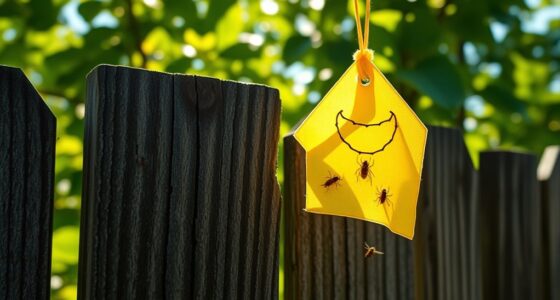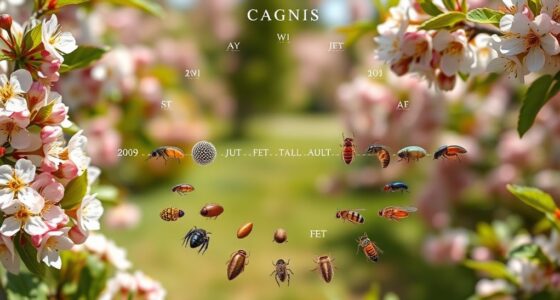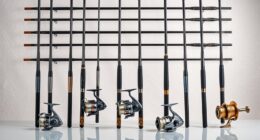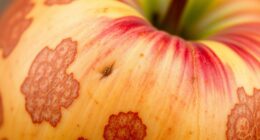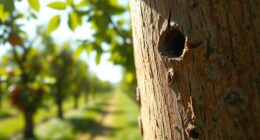When interpreting pheromone trap catches, focus on trap placement and consistent monitoring at hotspots or entry points. Remember, catch numbers show relative pest activity, not exact populations. Look for trends over time—steady or increasing catches suggest rising pest pressure, while declining numbers indicate control success. Environmental factors like weather also influence catches. Combining trap data with scouting provides clearer insights. Keep these tips in mind, and you’ll gain a better understanding of pest dynamics as you explore further.
Key Takeaways
- Trap catches indicate relative pest activity but do not directly measure actual pest populations.
- Consistent trap placement and weekly monitoring reveal trends over time, aiding in decision-making.
- Sudden increases in catches may signal population surges requiring action, while steady low counts suggest manageable levels.
- Environmental factors like weather and crop stage influence trap results and should be considered during interpretation.
- Combining trap data with scouting and lifecycle knowledge improves accuracy in pest management strategies.
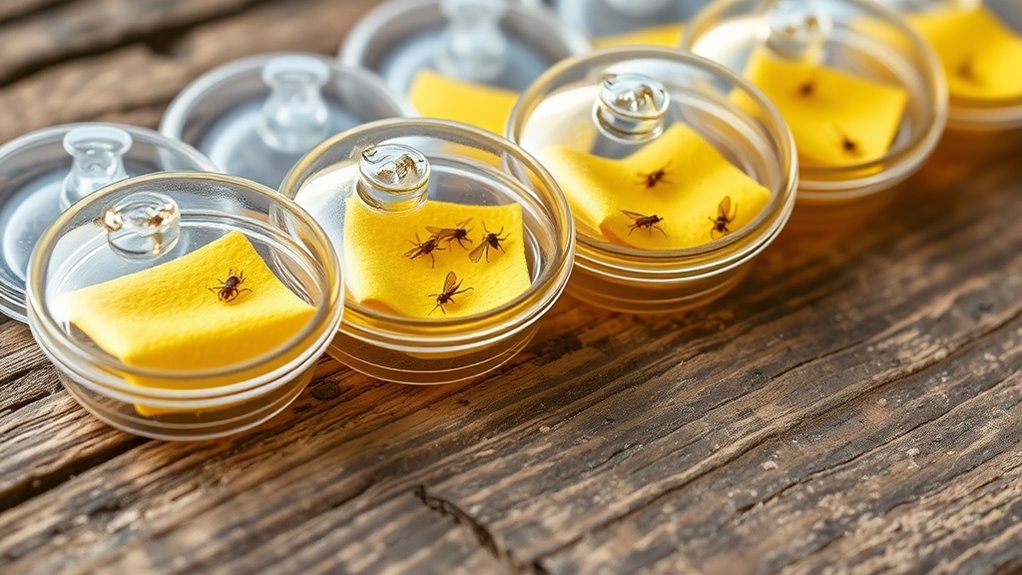
Pheromone traps are valuable tools for monitoring pest populations, but understanding their catches can be challenging without proper interpretation. To get the most accurate insights, you need to pay close attention to trap placement. Placing traps in the right locations is vital because it influences the number of pests you catch and how well you can interpret the data. Ideally, traps should be positioned where pests are most active, such as near host plants, entry points, or known hotspots. Avoid placing traps in areas that are unlikely to attract pests, like shaded corners or places heavily influenced by wind, as this can lead to misleading results. Consistent trap placement at similar locations over time is essential for reliable pest population estimation, helping you track trends rather than temporary fluctuations.
Once you’ve correctly placed your traps, the next step is to interpret the catches to estimate pest populations accurately. The number of moths or insects caught in a trap doesn’t always directly correlate with actual pest numbers in your field or orchard. Instead, it offers a relative measure that, when combined with knowledge of pest behavior and lifecycle, can help you make informed decisions. For example, a sudden spike in catches might indicate the beginning of a population surge, signaling that it’s time to take action. Conversely, low or steady catches could suggest that pest pressure remains manageable. Keep in mind that environmental factors like weather, crop stage, and trap placement can all influence catch numbers, so consider these when estimating pest populations.
Monitoring trap catches over time provides more reliable pest population estimation than single data points. Regular checks, ideally weekly, allow you to observe trends and determine whether pest levels are increasing, decreasing, or stable. This trend analysis helps you decide if you need to initiate control measures or if it’s better to wait and observe further. Remember, interpreting trap catches isn’t just about counting insects; it’s about understanding what those numbers imply for your specific crop and pest species. Combining trap data with scouting and other monitoring methods will give you a clearer picture of pest pressure, enabling more targeted and effective management actions. Proper trap placement and consistent monitoring are key to turning trap catches into actionable insights, helping you protect your crops efficiently. Additionally, understanding pest behavior and lifecycle stages can enhance the accuracy of your interpretations by applying integrated pest management strategies.
Frequently Asked Questions
How Do Weather Conditions Affect Trap Accuracy?
Weather variability considerably impacts trap reliability because temperature, humidity, and wind can alter insect activity. Warm, calm nights usually increase trap catches, while rain and strong winds can reduce insect movement and cause false readings. You should regularly monitor and adjust your trap placement based on weather patterns to guarantee accurate data. Understanding how weather affects insect behavior helps you interpret trap catches more reliably and plan your pest management strategies effectively.
What Is the Ideal Placement Height for Traps?
Think of your trap as a lighthouse guiding pests to their doom. For effective trap placement, you should aim for height optimization by positioning it about 3 to 6 feet off the ground. This height catches the pest’s eye as they fly through their habitat, ensuring maximum trap efficiency. Adjust as needed based on pest behavior and crop height, and you’ll keep the pests well within your grasp.
How Often Should Pheromone Traps Be Checked?
You should check pheromone traps weekly to guarantee effective pest monitoring. Regular trap maintenance helps you spot pest activity early and prevents infestations. By maintaining a consistent schedule, you stay ahead of pest populations and gather accurate data. Don’t forget to replace pheromone lures as recommended, and clean traps to keep them functioning properly. Consistent checks are key to successful pest management and minimizing crop damage.
Can Traps Be Used for Species Identification?
You can use traps for species identification by examining the trap material and pheromone formulation. The trap material, like sticky boards or funnel traps, captures specific insects, while the pheromone formulation attracts only targeted species. Imagine each trap as a silent sentinel, revealing the species lurking nearby. By analyzing the insects caught and the pheromone blend used, you can accurately identify the species present, making your pest management more precise.
Are There Differences in Trap Effectiveness Across Seasons?
Yes, trap efficiency varies across seasons due to seasonal variation in insect activity. During peak seasons, traps tend to catch more insects, making them more effective for monitoring. In contrast, in off-peak seasons, catches decrease, reducing trap efficiency. You should consider these seasonal changes when planning your monitoring strategies. Adjusting trap placement and timing can help optimize catch rates and improve overall effectiveness throughout the year.
Conclusion
Interpreting pheromone trap catches is like reading a secret message from pests. By paying attention to the number of moths or insects caught, you can gauge their activity and decide when to act. Remember, a sudden spike is a warning sign, much like flashing headlights on a dark road. Stay vigilant, track your catches regularly, and use this information to protect your crops effectively. Your proactive approach keeps pests at bay, just like a good defense keeps a fortress safe.



